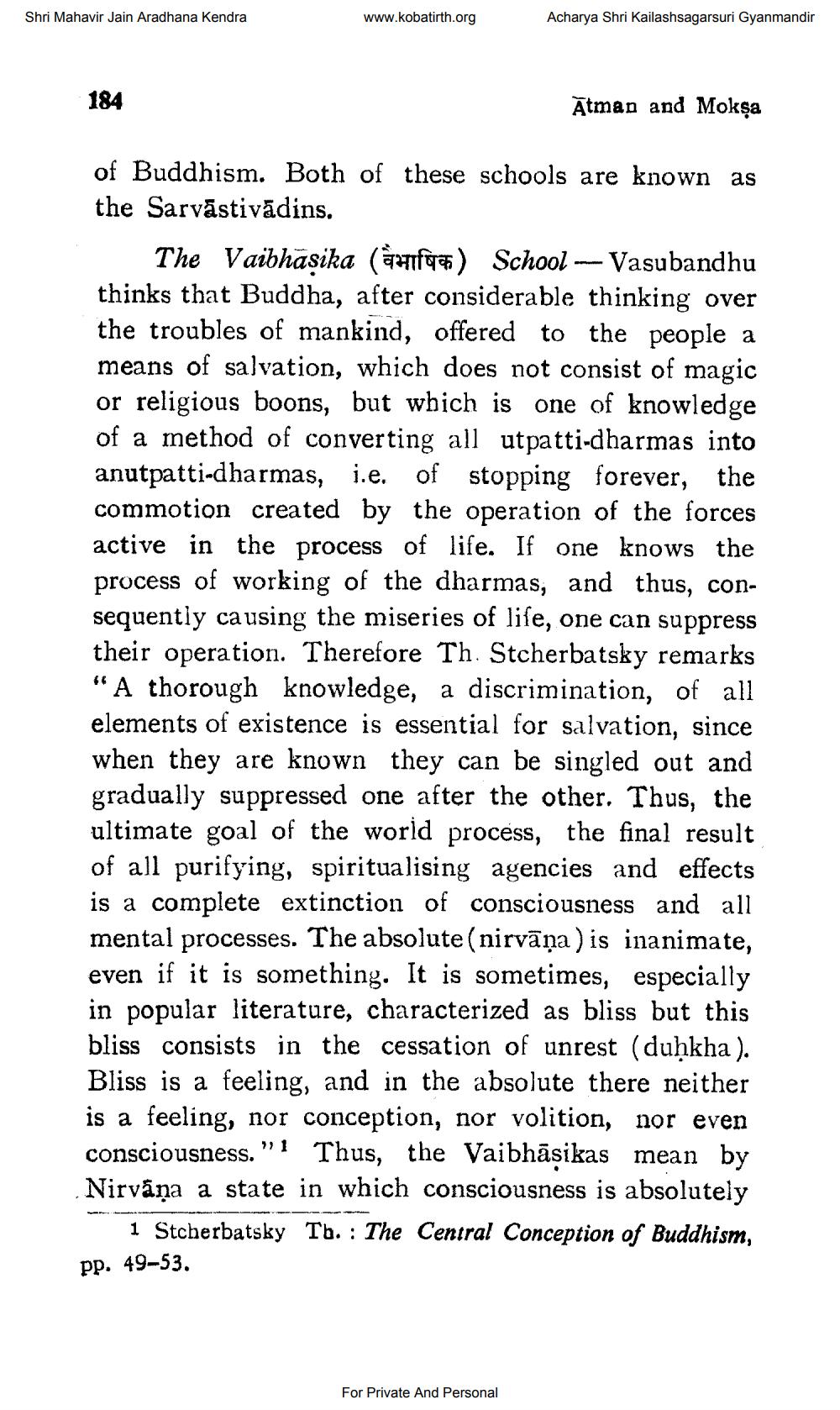________________
Shri Mahavir Jain Aradhana Kendra
www.kobatirth.org
184
Atman and Mokṣa
of Buddhism. Both of these schools are known as the Sarvästivādins.
Acharya Shri Kailashsagarsuri Gyanmandir
The Vaibhaṣika (f) School· - Vasubandhu thinks that Buddha, after considerable thinking over the troubles of mankind, offered to the people a means of salvation, which does not consist of magic or religious boons, but which is one of knowledge of a method of converting all utpatti-dharmas into anutpatti-dharmas, i.e. of stopping forever, the commotion created by the operation of the forces active in the process of life. If one knows the process of working of the dharmas, and thus, consequently causing the miseries of life, one can suppress their operation. Therefore Th. Stcherbatsky remarks "A thorough knowledge, a discrimination, of all elements of existence is essential for salvation, since when they are known they can be singled out and gradually suppressed one after the other. Thus, the ultimate goal of the world process, the final result of all purifying, spiritualising agencies and effects is a complete extinction of consciousness and all mental processes. The absolute (nirvāņa) is inanimate, even if it is something. It is sometimes, especially in popular literature, characterized as bliss but this bliss consists in the cessation of unrest (duḥkha). Bliss is a feeling, and in the absolute there neither is a feeling, nor conception, nor volition, nor even consciousness. Thus, the Vaibhāṣikas mean by Nirvana a state in which consciousness is absolutely
"' 1
1 Stcherbatsky Tb.: The Central Conception of Buddhism,
pp. 49-53.
For Private And Personal




